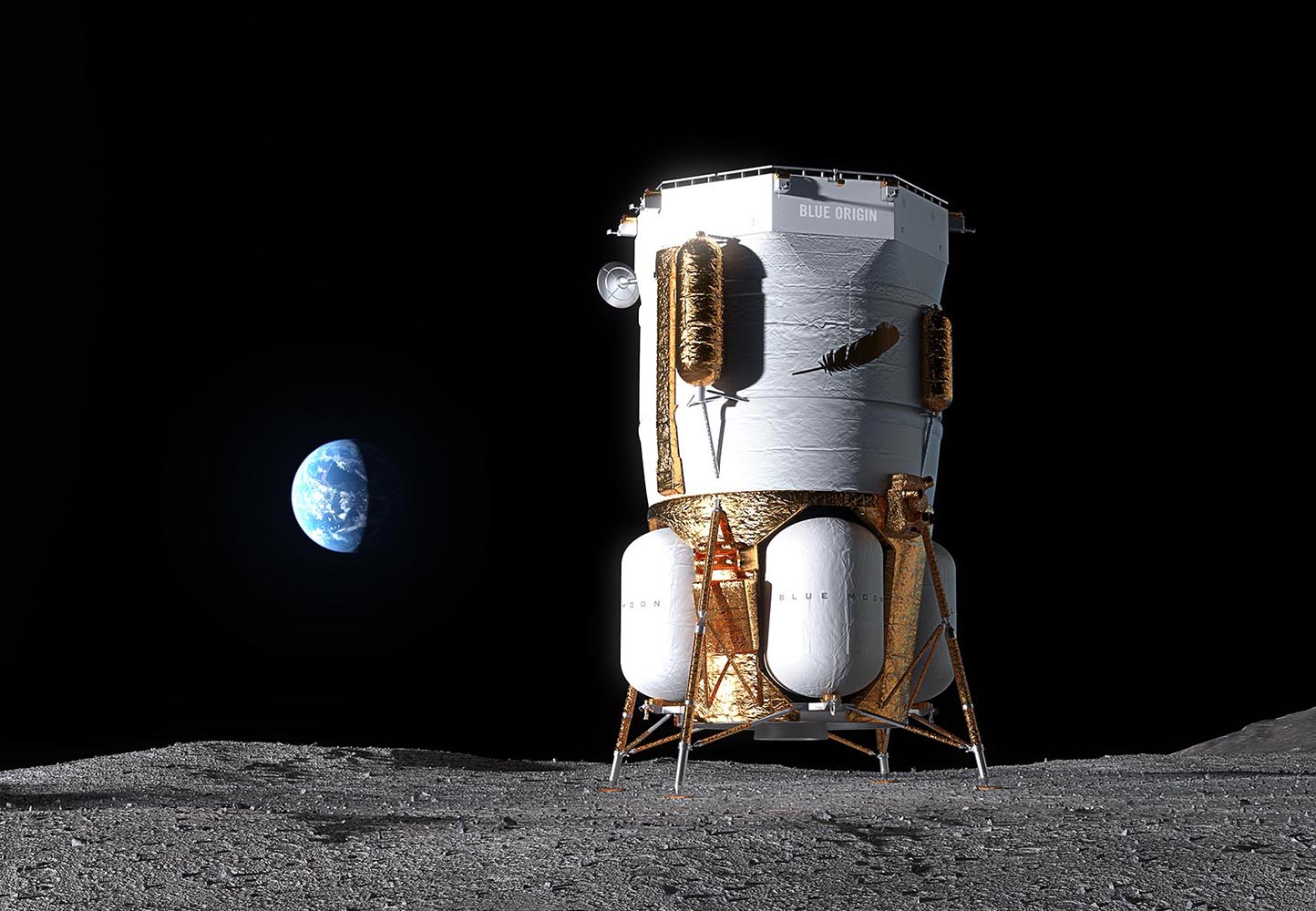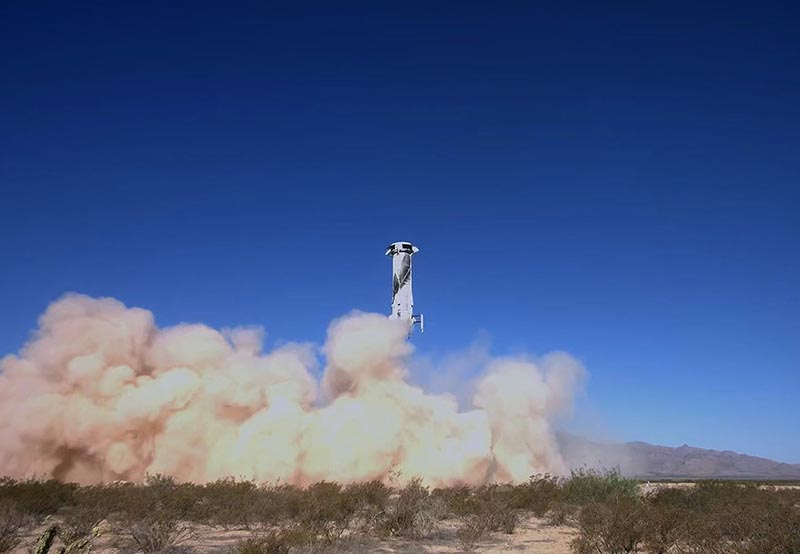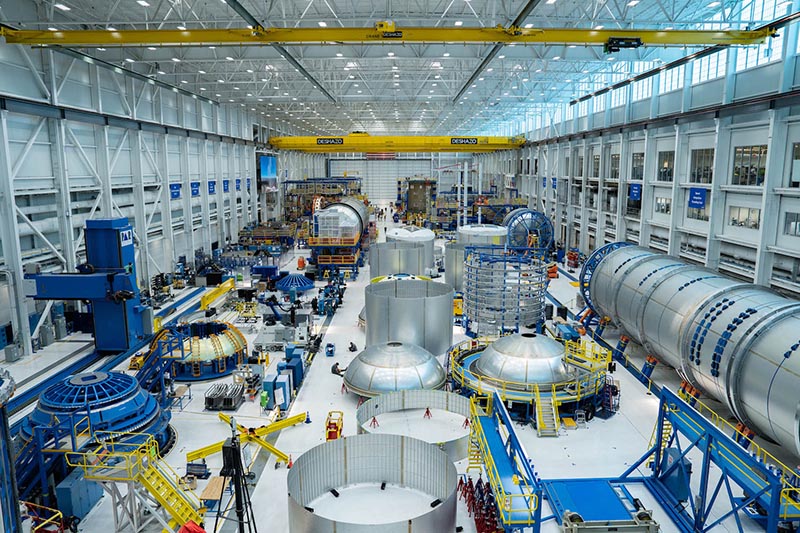
The future of space exploration: Insights from Brian Dykas of Blue Origin
Space travel has captivated human imagination for decades, transforming from science fiction to a realm of remarkable achievements. The early years of space exploration were dominated by the United States and the Soviet Union, but today, several countries, including China, Russia, and India, are making significant strides.
The United States continues to lead in space exploration, driven by both government and private sectors. NASA’s Artemis program aims to return humans to the Moon by 2024, establishing a sustainable presence by 2028. This mission is a stepping stone for future Mars exploration.
Meanwhile, private companies like SpaceX and Blue Origin are revolutionising space travel. SpaceX’s Starship aims to enable interplanetary travel, and its Crew Dragon spacecraft has successfully transported astronauts to the International Space Station (ISS). Blue Origin focuses on reusable rockets and has ambitious plans for lunar landings and space tourism.
The global space industry is currently valued at approximately USD447 billion, showing significant growth from USD280 billion in 2010. The industry is projected to reach around USD1 trillion by 2030, driven by increased satellite launches, space exploration initiatives, and the expansion of commercial space services.
The space launch services segment alone is expected to grow from USD4.91 billion in 2024 to USD10.98 billion by 2032, exhibiting a compound annual growth rate (CAGR) of 10.6% during this period . This growth is attributed to the rising number of satellite launches, increased demand for space-based communication, and advancements in launch vehicle technology. The satellite launch industry is experiencing significant growth driven by several factors. Increased demand for global internet and communication services from constellations like SpaceX’s Starlink and Amazon’s Project Kuiper, along with the need for earth observation to monitor climate change and natural disasters, are major contributors.

Blue Origin’s mission
Founded in 2000 by Jeff Bezos, Blue Origin’s mission is to enable a future where millions of people can live and work in space, reducing Earth’s environmental burden. The name “Blue Origin” refers to the blue planet, Earth, highlighting the company’s focus on preserving Earth by expanding human presence into space. The company is privately held, with an estimated valuation of around USD9 billion. Bezos has invested more than USD5 billion of his own money into Blue Origin. The founder of Amazon, Bezos has an estimated net worth of approximately USD191 billion to USD200 billion as of early 2024, making him one of the richest individuals in the world.
With a focus on innovation and reusability, Blue Origin, based in Kent, Washington, U.S.A., is spearheading a new era of space exploration and commercialisation.
Key milestones and achievements
New Shepard: Revolutionising space tourism
Named after Alan Shepard, the first American astronaut to venture into space, the New Shepard rocket is a testament to Blue Origin’s innovative spirit. Designed primarily for space tourism and scientific research, New Shepard features a reusable booster and a crew capsule capable of carrying up to six astronauts. This suborbital rocket embarked on its maiden test flight in 2015, marking the beginning of a series of successful missions. Among its notable achievements are multiple flights that carried scientific payloads and, in 2021, its first human passengers. On May 19, 2024, Blue Origin successfully completed its seventh human spaceflight and the 25th flight for the New Shepard program. This milestone signified a significant leap toward making commercial space tourism a reality.
New Glenn: Advancing orbital launch capabilities
In tribute to John Glenn, the first American to orbit Earth, Blue Origin is developing the New Glenn rocket. This heavy-lift orbital launch vehicle is poised to compete with SpaceX’s Falcon Heavy. The standout feature of New Glenn is its reusable first stage, designed to return to the launch site for refurbishment and reuse. Scheduled for its inaugural launch in the mid-2020s, New Glenn aims to provide reliable and cost-effective access to space, catering to commercial satellites, government missions, and potentially human spaceflight. This ambitious project reflects Blue Origin’s commitment to advancing space technology and expanding access to space.
Lunar missions and Blue Moon
Blue Origin is also making significant strides in lunar exploration. The Blue Moon lunar lander is being developed to deliver cargo and humans to the Moon’s surface, supporting the Artemis program of the U.S. National Aeronautics and Space Administration (NASA) and the broader vision of lunar colonisation. Blue Moon is designed to carry scientific instruments, rovers, and habitats, thereby playing a crucial role in establishing a sustainable human presence on the Moon. Additionally, Blue Origin is part of the National Team, collaborating with Lockheed Martin, Northrop Grumman, and Draper. This team has been selected by NASA to develop the Human Landing System (HLS) for the Artemis missions, further solidifying Blue Origin’s role in lunar exploration.
Orbital Reef: The future of commercial space stations
In partnership with Sierra Space, which is part of Sierra Nevada Corporation, Blue Origin is developing Orbital Reef, a commercially operated space station envisioned as a mixed-use business park in low Earth orbit. Orbital Reef aims to provide the necessary infrastructure for research, industrial activities, and tourism, thereby facilitating a sustainable space economy. This ambitious project represents a significant step toward commercialising space and making it accessible for a variety of uses, from scientific research to industrial production and tourism.
Insights from Brian Dykas at the STLE Annual Meeting
At the recent STLE Annual Meeting in Minneapolis, Minnesota, U.S.A., Brian Dykas, a senior materials and processes engineer at Blue Origin, delivered an inspiring keynote speech that highlighted the advancements and future opportunities in space exploration, as well as job opportunities for tribologists in the space industry. His address covered a range of topics, from his personal journey in the aerospace industry to the broader challenges and innovations shaping the future of space travel.
Dykas began his keynote by sharing his lifelong passion for space. Growing up during the era of the Space Shuttle, a partially reusable low Earth orbital spacecraft system operated by NASA, he was captivated by the idea of space travel. This fascination led him to pursue a career in aerospace engineering. Despite the challenges faced by the space industry in the mid-2000s, Dykas never gave up on his dream, ultimately finding his way to Blue Origin. Before Blue Origin, he was a research aerospace engineer in the U.S. Army Research Lab for 11 years. He obtained his PhD in Mechanical Engineering from Case Western Reserve University in Cleveland, Ohio, U.S.A.

The evolution of the space industry
Dykas described the significant changes in the space industry over the past two decades. The shift from government-driven projects to increased private investment has opened new opportunities for commercial ventures in space. This transition, often referred to as “NewSpace,” has led to a surge in innovation and the development of profitable assets in the space market.
One of the primary goals for Blue Origin and the broader space industry is to reduce the cost of access to space. Dykas emphasised the importance of reusability in achieving this objective. By reusing rockets, much like commercial aviation reuses aeroplanes, the industry can significantly lower costs and improve the feasibility of space travel. However, this approach brings its own set of challenges, including the need for improved life spans of mechanical systems, advanced coatings, and robust lubrication solutions to withstand harsh maritime environments.
Dykas highlighted the exciting developments in commercial space stations. The International Space Station (ISS) has demonstrated the potential for continuous human presence in space, but future stations will need to be more efficient and commercially viable. Innovations in manufacturing, pharmaceuticals, and space tourism will play a key role in these next-generation space stations. Additionally, the lessons learned from the ISS will inform the design of more maintainable and cost-effective systems.
The role of tribologists and lubrication engineers
Throughout his speech, Dykas stressed the critical role that tribologists and lubrication engineers play in the success of space missions. From launch systems to in-space assets, the expertise in tribology is essential for developing reliable and durable technologies. He called on the community to continue innovating and collaborating to address the unique challenges of space exploration.
The space industry faces numerous tribological and lubrication challenges due to extreme conditions. These include extreme temperature fluctuations affecting lubricant performance, vacuum conditions causing outgassing and lubricant loss, and high radiation levels degrading materials. Microgravity affects fluid behaviour and wear patterns, necessitating careful design. Contamination control is crucial to prevent malfunctions, requiring strict cleanroom standards. Material compatibility must be ensured to avoid adverse reactions, and components must be durable and reliable over long missions without maintenance. Addressing these issues demands advanced, extensively tested materials and lubricants designed for space environments.
Dykas also touched on the transformative potential of space tourism. He highlighted the “overview effect,” a profound shift in perspective reported by astronauts after viewing Earth from space. Expanding access to space tourism could foster a broader appreciation for the planet and inspire future generations to pursue careers in space and science.
Dykas’ keynote at the STLE Annual Meeting was a powerful reminder of the exciting future of space exploration. His insights into the evolving industry, the importance of reducing costs, and the crucial role of tribology and lubrication engineering underscored the collaborative effort required to push the boundaries of what is possible in space. As Blue Origin and other companies continue to innovate, the dream of sustainable and affordable space travel moves closer to reality.








